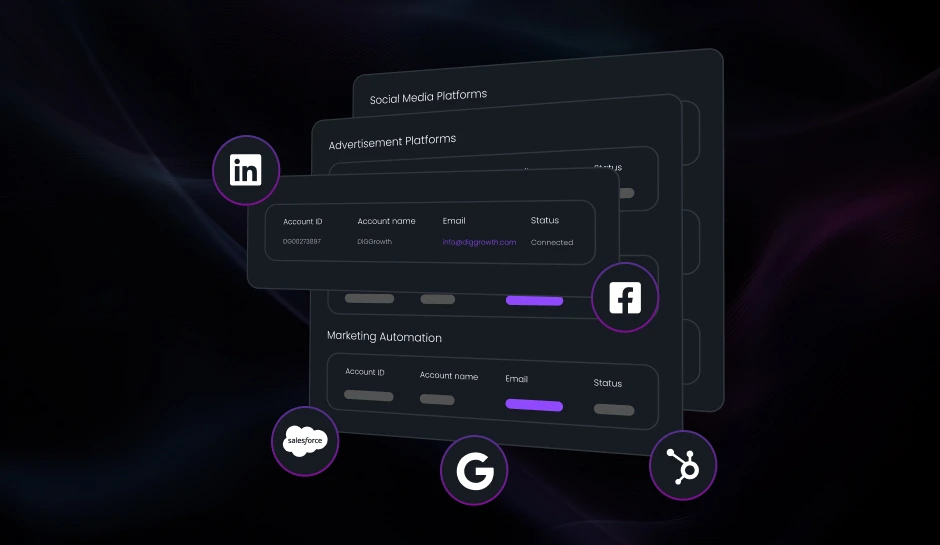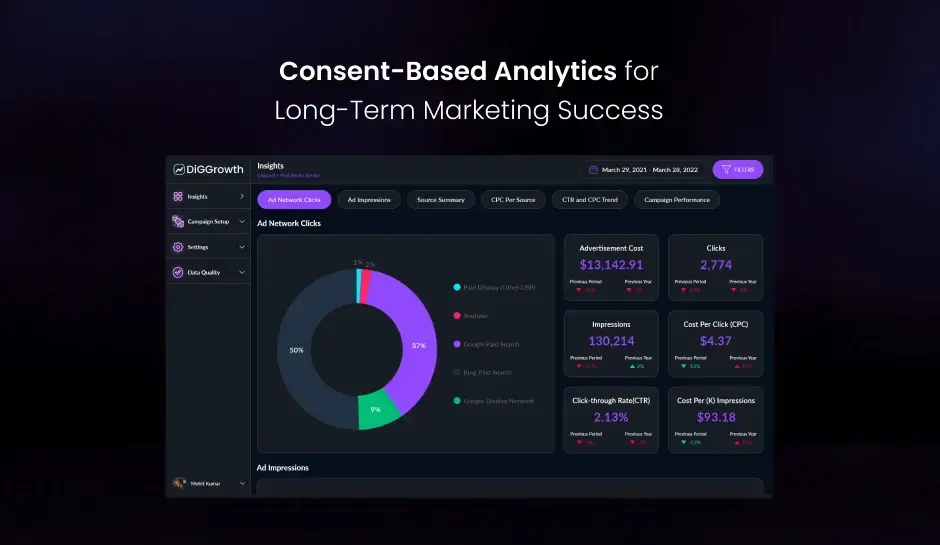
Attribution Investment Example: How Smart Leaders Are Driving ROI with Data-Driven Decisions
Marketing teams are under growing pressure to prove performance and impact. Attribution investment offers a practical path for aligning decisions with measurable results, making ROI not just a goal, but a process grounded in real-time data. Read on.
How do successful businesses ensure every dollar spent on marketing delivers measurable results? This question keeps many leaders awake at night as they navigate the increasingly complex digital ecosystem. With countless channels, touchpoints, and campaigns, pinpointing what truly drives returns is no small feat.
A common challenge businesses face is the lack of clarity in attributing results to specific marketing efforts. Traditional methods often fail to capture the nuances of multi-touch customer journeys, leading to misguided investments and wasted resources. Leaders struggle with fragmented data, ineffective tools, and many metrics that obscure rather than clarify performance.
The solution is a strategic shift toward attribution investment—a data-driven approach that uncovers actionable insights. Leveraging advanced attribution models allows businesses to identify what works, optimize their budgets, and significantly enhance ROI. This is not just about crunching numbers but about smarter decision-making that drives measurable success.
Why Attribution Investment Is Essential for ROI
Guessing where to allocate resources is no longer an option. Attribution investment provides clarity by connecting every dollar spent to the results it delivers. Businesses leveraging data-driven attribution strategies optimize their budgets and gain a competitive edge by understanding what drives customer actions.
For many leaders, the challenge lies in identifying the marketing channels and touchpoints that contribute the most to conversions. Decisions are often based on incomplete data or assumptions without attribution, leading to inefficiencies and lost opportunities. For instance, over-reliance on last-touch attribution can obscure the value of earlier interactions, such as email campaigns or social media engagements, that nurture prospects before conversion.
Leaders can uncover insights that traditional methods overlook by adopting attribution models tailored to their goals—such as multi-touch or time-decay attribution. This allows them to:
- Allocate resources to high-performing channels.
- Reduce spend on low-impact efforts.
- Refine customer journeys for better engagement and retention.
Attribution investment is not just a marketing tool but a strategic necessity for leaders who want to maximize ROI and make confident, data-backed decisions.
An Overview of Attribution Models and Methodologies
Attribution models serve as tools for investors and fund managers to dissect portfolio performance into its components and understand the impact of their decisions. These tools trace the source of each portion of a portfolio’s returns, assigning credit or blame to various decisions and market factors.
Introduction to Various Attribution Models
Different models offer distinct lenses through which to examine investment outcomes:
- The Brinson-Fachler model isolates stock selection and asset allocation effects.
- Fixed income attribution discerns the contribution of duration, yield curve positioning, and sector allocation.
- Multi-asset attribution examines the effects of strategic allocation among various asset classes like stocks, bonds, and commodities.
- Factor-based models consider how investment styles, such as value or momentum, and macroeconomic factors drive portfolio performance.
The Brinson Model Explained
The Brinson Model, created by Gary P. Brinson and his colleagues, remains a bedrock in the field. Breaking down performance into allocation, selection, and interaction effects, this model furnishes an intricate picture of a portfolio manager’s talents in both security selection and asset allocation compared to a benchmark.
Fixed Income vs. Multi-Asset Class Attribution
Fixed income attribution examines returns focusing on interest rate changes, credit spreads, and the effects of specific changes within the bond market. Conversely, multi-asset class attribution spans a broader range of asset types and must account for interplay and correlation between disparate investment classes. This approach often requires a more complex system to capture the nuances of each asset’s influence on the total portfolio’s performance.
Emphasizing Factor-Based Attribution Approaches
Factor-based models have gained prominence, attributing performance to predefined factors or economic indicators. These attribution methodologies underscore the impact of style biases, such as growth or size effects, country or industry influences, or distinct economic indicators on a portfolio’s returns. For sophisticated investors who employ quantitative strategies, factor-based attribution can be particularly enlightening, revealing how active management and systematic exposures to particular risks generate or erode value.
Real-World Examples of Attribution Investment Driving ROI
Attribution investment is not just about collecting data; it is about transforming it into actionable insights that directly impact business performance. Let us examine how companies successfully implement attribution strategies to drive measurable ROI improvements.
Example 1: Optimizing Budget Allocation Across Marketing Channels
A leading e-commerce retailer faced challenges understanding which marketing channels drove conversions. Their reliance on last-touch attribution overvalued channels like retargeting ads while undervaluing awareness-building campaigns such as influencer partnerships.
By adopting a multi-touch attribution model, they could measure each interaction’s contribution along the customer journey. The insights revealed that influencer marketing was critical in nurturing leads early in the funnel, prompting a reallocation of 15% of their budget.
The result? A 20% increase in sales within three months and a more efficient marketing spend.
Example 2: Enhancing Customer Retention through Attribution Insights
A subscription-based SaaS company struggled with churn and wanted to identify which touchpoints most effectively kept customers engaged.
Through a time-decay attribution model, they discovered that personalized onboarding emails sent within the first 24 hours were pivotal in reducing churn rates. They enhanced their email campaigns with tailored content and proactive support outreach.
This effort resulted in a 15% improvement in customer lifetime value and a noticeable drop in churn.
Example 3: Streamlining Performance Across the Funnel
A global B2B software provider faced fragmentation in tracking performance across its multi-channel campaigns, which included webinars, email marketing, and account-based strategies.
By implementing an algorithmic attribution model, they comprehensively understood how each channel influenced conversions. The data showed that webinars played a significant role in the mid-funnel stage, driving qualified leads to engage further.
As a result, the company increased its investment in webinars and optimized post-webinar follow-ups, leading to a 30% decrease in acquisition costs and a 25% boost in conversion rates.
These examples highlight how attribution investment can uncover hidden opportunities, optimize strategies, and align marketing efforts with measurable outcomes.
Whether reallocating budgets, refining customer experiences, or streamlining multi-channel efforts, attribution provides the clarity needed to make smarter, ROI-driven decisions.
Advanced Attribution Models: Unlocking Precision in ROI Analysis
Not all attribution models are created equal, and relying on a one-size-fits-all approach can lead to skewed insights. Advanced attribution models provide a nuanced understanding of how various touchpoints contribute to conversions, enabling leaders to make precise decisions that maximize ROI.
1. Multi-Touch Attribution
This model distributes credit across all touchpoints in a customer’s journey. Unlike first-touch or last-touch attribution, it acknowledges the value of every interaction, from awareness-building campaigns to the final conversion.
For instance, a retail brand using multi-touch attribution identified that social media ads were pivotal in driving initial engagement, while email campaigns were critical in closing sales. By reallocating their budget accordingly, they increased conversions by 18% without raising overall spending.
2. Time-Decay Attribution
Time-decay attribution is particularly effective for businesses with short sales cycles, where recent interactions hold greater influence.
A fitness app company used this model to understand the value of their last-minute retargeting ads. The insights led them to fine-tune these campaigns, improving their ROI on retargeting efforts by 25%.
3. Algorithmic Attribution
This is the most advanced model, using machine learning to evaluate patterns and assign credit based on the unique dynamics of each campaign. It provides unparalleled accuracy but requires robust data and technical expertise.
A global tech company implemented algorithmic attribution to track its multi-channel marketing efforts. The data revealed unexpected insights, such as the outsized impact of video ads on mid-funnel engagement. Acting on this, they increased their investment in video content, resulting in a 40% improvement in lead quality.
Tailoring Attribution Models to Business Goals
The choice of attribution model depends on specific objectives, whether it is improving lead quality, enhancing customer retention, or optimizing marketing spend. Leaders who adopt advanced attribution strategies unlock deeper insights and greater precision, setting the stage for sustained growth.
Measuring ROI Beyond Revenue: Key Metrics for Attribution Success
Attribution investment goes beyond tracking conversions or revenue. Smart leaders measure ROI using a range of metrics that reveal deeper insights into their marketing efforts’ effectiveness and long-term impact. Here are key metrics to focus on:
1. Customer Lifetime Value (CLV)
This metric measures a customer’s total revenue over their relationship with your business. Attribution models can reveal which channels and campaigns attract high-value customers, enabling leaders to focus on efforts that drive sustainable growth.
For example, a subscription-based service identified that customers acquired through referral programs had a 20% higher CLV than those acquired through paid ads. With this insight, they expanded their referral incentives, boosting overall profitability.
2. Marketing Efficiency Ratio (MER)
MER evaluates the return on total marketing spend relative to revenue. This broad metric helps businesses understand whether their marketing strategy delivers value. Attribution insights can refine this ratio by highlighting which spending segments drive the most returns.
A retail brand reduced its MER by reallocating spending from underperforming channels to those identified as high ROI drivers through multi-touch attribution.
3. Return on Ad Spend (ROAS)
ROAS is a channel-specific metric that shows the revenue generated for every dollar spent on advertising. Attribution investment helps leaders evaluate ROAS across multiple platforms, ensuring that budgets are directed to the most effective campaigns.
An e-commerce company using algorithmic attribution uncovered that Instagram ads had a higher ROAS than other social channels for driving impulse buys. Redirecting resources to Instagram led to a 25% increase in ad-driven revenue.
4. Conversion Rate by Funnel Stage
Understanding how marketing efforts impact different customer journey stages provides valuable insights. Attribution helps measure the effectiveness of upper-funnel awareness campaigns, mid-funnel engagement efforts, and lower-funnel conversion tactics.
For instance, a B2B software firm tracked how webinars influenced mid-funnel conversions. Attribution data revealed a 40% lift in lead quality from prospects who attended webinars, prompting the company to increase investments in this channel.
5. Channel-Specific Contribution
Not all channels contribute equally to ROI. Attribution analysis assigns precise values to each channel, ensuring that marketing teams focus on high-performing ones.
By analyzing channel-specific contributions, a travel agency learned that PPC campaigns drove the majority of last-minute bookings, while content marketing excelled at nurturing early-stage prospects. This clarity allowed them to optimize resource allocation effectively.
Pro Tip- By going beyond basic revenue metrics and incorporating these insights, leaders can measure the full impact of their marketing efforts. Attribution provides the granular data to align marketing performance with business objectives, driving ROI and long-term success.
Overcoming Common Challenges in Attribution Investment
While attribution investment offers transformative potential, implementing it effectively is not without challenges. Leaders must address these hurdles to ensure accurate insights and maximize ROI.
1. Fragmented Data Across Platforms
Modern businesses use multiple tools and platforms for marketing, creating silos of data that are difficult to consolidate. This fragmentation can lead to incomplete or inconsistent attribution results.
Solution: Invest in integrated analytics tools or attribution platforms that aggregate data from various sources. Ensure your systems are compatible and communicate seamlessly, providing a unified view of customer interactions.
2. Choosing the Right Attribution Model
With numerous models available, businesses often struggle to select one that aligns with their goals. Misaligned models can result in inaccurate insights, and misguiding decision-making.
Solution: Define clear business objectives before choosing an attribution model. For example, use multi-touch attribution for complex customer journeys or time-decay models for short sales cycles. Consult with data analysts or use test-and-learn approaches to determine the best fit.
3. Poor Data Quality
Incomplete, inaccurate, or outdated data can undermine the effectiveness of any attribution effort. Even the most advanced attribution models will fail to deliver actionable insights without clean data.
Solution: Implement strict data governance practices, including regular audits, validation protocols, and real-time updates. Ensure all team members involved in data collection and management understand the importance of accuracy.
4. Resistance to Change
Adopting attribution investment often requires shifts in organizational mindset and processes. Resistance from teams accustomed to traditional methods can delay or derail implementation efforts.
Solution: Communicate the benefits of attribution investment clearly to stakeholders. Provide training and resources to help teams adapt to new tools and methodologies. Demonstrating quick wins, such as improved campaign performance, can help build buy-in.
5. Attribution in Complex Customer Journeys
For businesses with long or multi-step customer journeys, tracking and assigning credit to all touchpoints can be challenging. This complexity often leads to oversimplified models that miss key interactions.
Solution: Leverage advanced attribution models like algorithmic or custom-built solutions tailored to your customer journey. These models use machine learning to uncover patterns and assign credit more precisely.
6. Budget and Resource Constraints
Implementing robust attribution solutions requires investments in tools, training, and expertise, which can be a barrier for some organizations.
Solution: Start small by focusing on key campaigns or high-impact channels. Use free or low-cost tools initially, scaling up as you see results. Additionally, partner with external consultants if in-house expertise is limited.
Key Takeaways
- Attribution investment is a data-driven approach that helps businesses accurately track marketing performance and optimize resources to maximize ROI.
- Advanced attribution models, such as multi-touch and algorithmic attribution, offer valuable insights into customer journeys and channel contributions, driving more informed decision-making.
- Successful attribution investment requires overcoming challenges like fragmented data, poor data quality, and resistance to change through integrated tools and strategic implementation.
- Beyond revenue, key metrics like customer lifetime value, marketing efficiency ratio, and channel-specific contribution provide a deeper understanding of marketing performance and help refine strategies.
- Using data-backed attribution insights, real-world examples demonstrate how businesses can improve customer retention, optimize budgets, and streamline multi-channel marketing efforts.
Conclusion
Attribution investment is not just a trend but a strategic imperative for leaders looking to make smarter decisions and achieve measurable success. By adopting advanced attribution models, businesses can better understand what drives customer behavior, leading to more effective marketing strategies and enhanced ROI. While challenges exist, the rewards are significant for those willing to invest in the tools, data, and methodologies that provide true clarity.
To transform your marketing strategy with data-driven insights.
Reach out to us at info@diggrowth.com for expert guidance and solutions tailored to your business needs.
Ready to get started?
Increase your marketing ROI by 30% with custom dashboards & reports that present a clear picture of marketing effectiveness
Start Free Trial
Experience Premium Marketing Analytics At Budget-Friendly Pricing.

Learn how you can accurately measure return on marketing investment.
Additional Resources
Integrating Data from Different Channels for a Holistic View of Your Marketing Performance
Who's your ideal customer? Where do they come...
Read full post postGet Your Channels to Play Nice: Integrated Data for Smarter Marketing
If you’re a savvy marketer, you’re living in...
Read full post postConsent-Based Analytics: Ensure Long-Term Marketing Success
As marketers, we want our customers to perceive...
Read full post postFAQ's
The timeline for results varies, but businesses often see meaningful insights within 2-3 months. Continuous optimization and model refinement are key to sustaining and improving long-term ROI.
Yes, attribution models are scalable. Small businesses can start with simpler models like first-touch or multi-touch attribution to optimize marketing spend and gradually implement more complex models as they grow.
For long sales cycles, consider multi-touch attribution. For short sales cycles, time-decay models might be more appropriate. Test and iterate for accuracy.
Attribution platforms like Google Analytics, HubSpot, and specialized solutions like Attribution or Ruler Analytics can help consolidate data, track customer touchpoints, and generate insights across marketing channels.
Attribution investment clarifies which touchpoints matter most in the customer journey, enabling businesses to optimize their marketing funnels, enhance engagement, and drive conversions more effectively.
 Shagun Sharma
Shagun Sharma  Rahul Sachdeva
Rahul Sachdeva 

